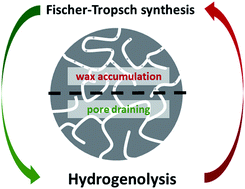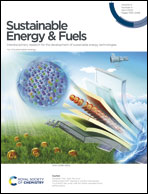Fischer–Tropsch synthesis with periodical draining of a liquid-filled catalyst by hydrogenolysis
Abstract
Fischer–Tropsch (FT) reactors, e.g. fixed-beds, are usually operated in the steady state. The accumulation of long-chain liquid hydrocarbons (waxes) in the catalyst's pores during the start-up of a reactor then frequently leads to internal mass transfer limitations, and hence to a decrease of the effective reaction rate. An alternating FT/hydrogenolysis process is proposed to minimize pore diffusion limitations and to enhance the mean reaction rate. This transient process was realized by switching between a pore filling FTS sequence with only partially liquid-filled pores (at least on average) and a pore draining hydrogenolysis sequence, realized by a switch from syngas (H2, CO) to a H2-rich but CO-free feed gas. The preferential filling of the catalyst particles with higher C21+-hydrocarbons during FTS and the subsequent cracking to short-chain hydrocarbons by hydrogenolysis limit the production of waxes. The influence of the filling and draining time on the process enhancement as well as on the selectivity towards liquid fuels (C5–C20-fraction) was experimentally investigated, indicating an increase of the mean reaction rate by 20%; further improvements are outlined based on theoretical considerations.



 Please wait while we load your content...
Please wait while we load your content...